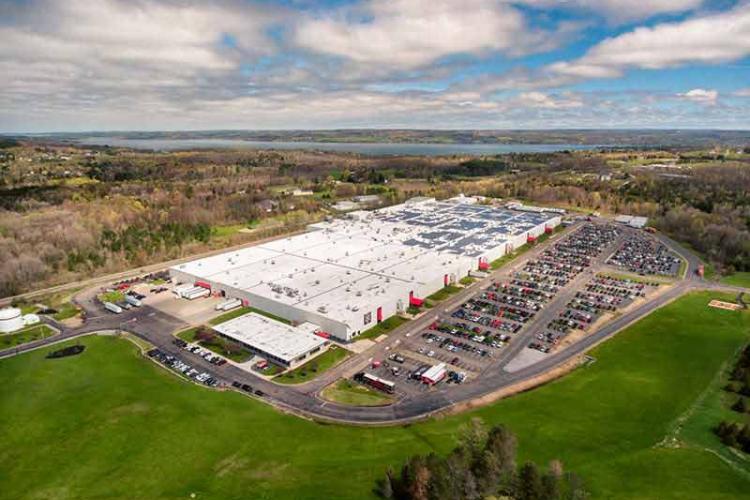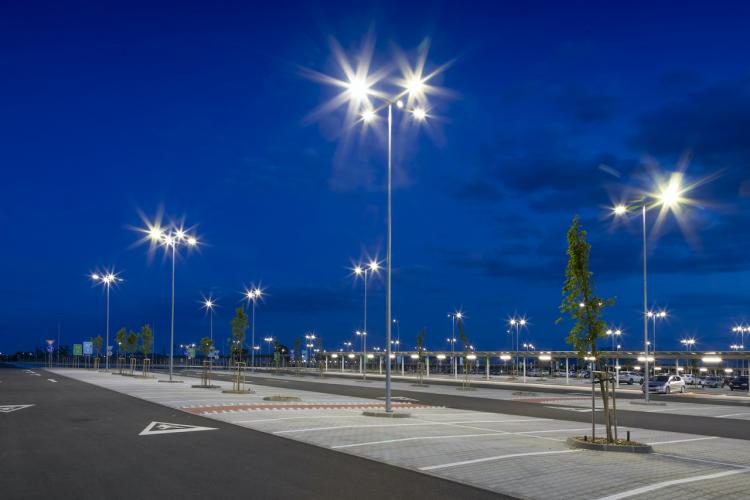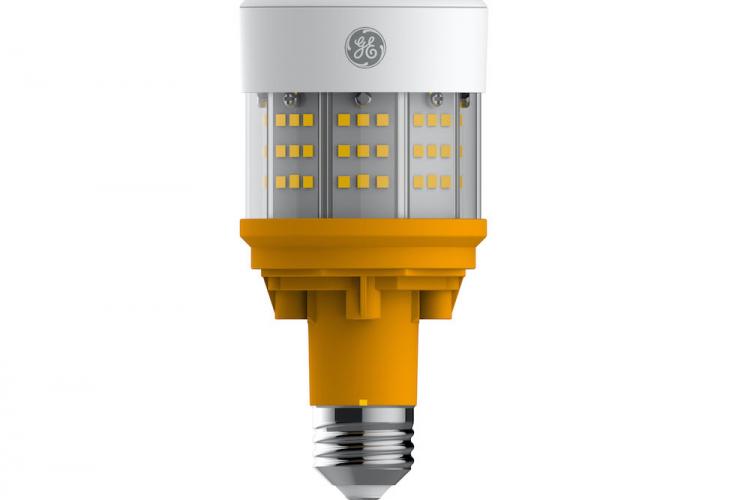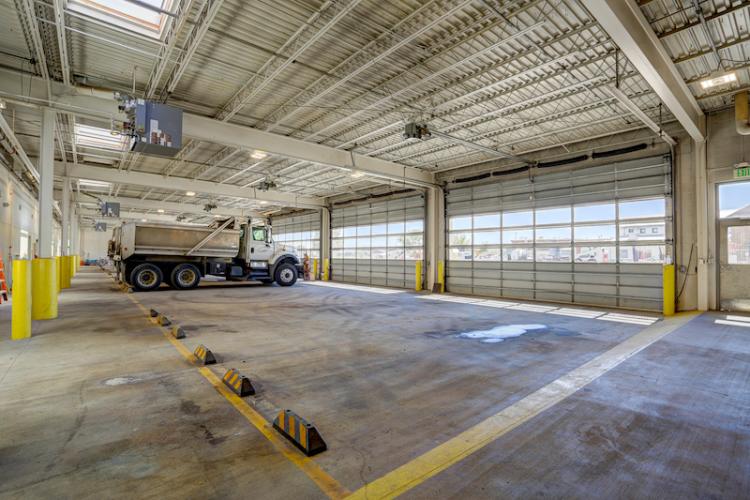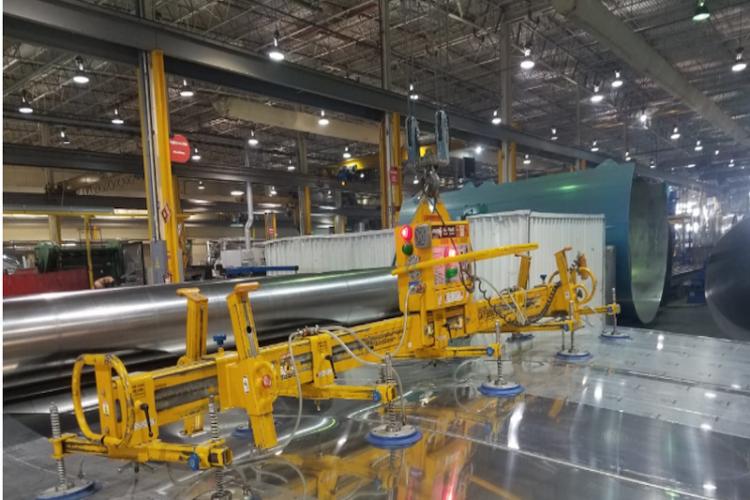Cummins Drives Heavy-Duty Savings with LED Lighting and Controls from Current
Cummins Drives Heavy-Duty Savings with LED Lighting and Controls from Current
Cummins Inc. (NYSE: CMI) produces a broad range of heavy-duty engines for customers around the world, and since 1974, the Jamestown Engine Plant (JEP) in Jamestown, New York, has played a critical role in the company’s success. JEP is home to 1,600 employees and produces more than 450 engines a day. In fact, the plant shipped its 2 millionth engine in 2018.
These dependable, fuel-efficient engines enable customers to be successful, much like reliable, energy-efficient lighting and controls from Current, help Cummins reduce operating costs at its 42-plus-year-old facility with a particularly bright future.
A Culture of Continuous Improvement
Cummins uses Six Sigma and Continuous Improvement to save the company and its customers billions of dollars. In fact, Six Sigma projects have identified nearly $7 billion in PBIT (Profit Before Interest and Tax) savings for Cummins since 2000, while its customers have saved an estimated $1.4 billion since 2005. To date, more than 12,000 Cummins professionals have been trained on Six Sigma tools, allowing the company to speak a common language when it comes to solving its most important business challenges.
For Cummins’ facilities team, this constant focus on creating operational efficiencies extends to environmental management and saving energy in buildings. That’s why JEP’s facilities team, Andrew Maze and Dave Willey, contacted Current when the time came to evaluate new lighting and controls options for the company’s 1-millon-square-foot manufacturing plant.
Going Lean with LED
Like many factories, JEP used mostly fluorescent lights to illuminate the plant. Only, these lamps tended to last just 20,000 hours, and with more than 2,800 fixtures spread across the facility, frequent changeouts proved time-consuming and disruptive. Maze and Willey wanted a longer-lived solution that would reduce employee interaction with electrical circuits per NFPA70e and conserve energy at the same time. The duo knew LED technology held the answer, but finding the right fixture was critical.
Applying Six Sigma methodology, they started by collecting qualitative input from production employees and recording hundreds of foot-candle readings throughout the plant. This gave the facilities team a good idea of where light levels could be improved and helped establish a baseline for energy usage to measure future reductions against.
“We asked our operators where they thought the light wasn’t bright enough to do their work, and we analyzed our lighting spend in detail to understand how LED could impact our electricity bills,” said Maze. “It’s easy to overlook lighting until you really examine the potential that exists for a plant this size.”
With lighting criteria in hand, the JEP facilities team began to evaluate different brands of high-bay LED fixtures designed specifically for industrial spaces. While some of these other brands quit working within a week, the Albeo™ ABV LED luminaire from Current garnered strong reviews for its high lumen output and superior reliability. Maze and Willey also liked how the Albeo fixture was lightweight and easy to install, which reduced installation labor.
Crucially, Current’s LED fixtures reduced energy consumption by nearly 50 percent (134 watts vs. 254 watts), compared to the plant’s previous T8 fluorescent lamps, and last up to five times longer (L70 rated life at 100,000 hours), meaning much less maintenance cost moving ahead.
Wireless Controls Add “Wow” Factor
Current also demonstrated its Daintree† wireless lighting controls that could be installed in conjunction with the fixtures. Enabled by embedded network devices called Wireless Area Controllers (WAC), the Daintree system promised to put robust dimming and scheduling capabilities in the hands of facilities engineers. Moreover, Cummins’ engine plant would avoid the extra cost and disruption that comes with installing a wired system.
“The Daintree solution worked seamlessly with the Albeo fixtures,” Willey said. “Current also showed us how to maximize the full potential of the system and save every penny by controlling each light individually or in zones, depending on the needs of the plant, with just a few key strokes. It’s a level of control we simply didn’t have before.”
Cummins can pre-set the light output levels of its Albeo luminaires using Daintree to achieve a target light level on the floor. In most cases, this is in the 60 percent range. This saves even more energy and extends fixture life. In fact, the average foot-candle reading inside JEP increased from 29 to 35 fc following the installation of Current’s Albeo fixtures even with the lower set points.
“Another benefit is that when our utility requests a demand reduction event, it’s easy to go in and lower light levels across the entire plant, which saves additional energy during peak demand,” added Willey.
Utilizing occupancy sensors integrated with the Daintree system, the new lighting system offers a full range from 0 to 100 percent output, which can be controlled automatically or manually, enabling Cummins to save even more when work zones are unoccupied.
Saving Inside-Out
Seeing the difference LED could make, Maze and Willey turned their attention outside the plant to the employee parking lot where older HID fixtures were performing inefficiently and casting light in areas where it wasn’t being utilized, including the plant roof. Like many other parking lots, the light levels were uneven.
This time, Current showed Cummins a bright white, 276-watt Evolve™ LED outdoor area light that could replace their existing 1,000-watt HID lamps. Following the installation of the Evolve fixtures, visibility in the parking lot was greatly improved and light trespass onto adjacent property and the roof was no longer a problem.
Not only are plant associates pleased, but Cummins is saving big again with over a 70 percent energy reduction in the parking lot. And like LED lighting inside the plant, the new outdoor fixtures are expected to significantly outlast their metal halide predecessors by many years.
Saving Energy and Money
Early on, Current worked with Cummins to establish a goal of $400,000 in annual energy reductions as the result of its lighting and controls installations at the Jamestown Engine Plant. Incredibly, this mark has already been exceeded by 70 percent as JEP achieved total savings of $409,000 in its first year as a newly LED-lit facility.
For Cummins, the complete project—which included various other measures to update power distribution and energy infrastructure at JEP—further qualified for $1.5 million in National Grid New York energy efficiency rebates, of which $736,000 is attributable to the plant’s new lighting and controls.
“Our return was so good that, at first, there was need for verification. An independent third party was sent out to verify the savings,” said Maze. “We had all the data to back our claims, which was another benefit in choosing a controls package that easily integrates with our building management system.”
“I would strongly encourage plant operators to explore the programs available to them; lighting rebates are fairly well known but there are other incentives for controls that can really move your project along. In fact, our savings essentially paid for the system in this case,” added Maze.
An Even Brighter Future
With new high-bay fixtures and precise lighting controls in place, Cummins now plans to turn its attention to converting individual workstations at JEP from fluorescent to LED task lighting. In time, the engine-maker will also evaluate a full retrofit of the plant’s offices.
“We considered other product options but felt most confident in Current and Daintree,” said Maze. “If something goes wrong, we know they’ll be there to troubleshoot the problem. The longevity of the company isn’t a concern for us, which was a critical factor in our final decision.”
Meeting Tomorrow’s Goals
Now more than a decade into its sustainability journey, Cummins is well on its way to achieving one of its goals of reducing energy intensity in its facilities by 32 percent by 2021. In 2016, energy use was already down by 24 percent across its property portfolio, while the company estimates total savings of about $50 million per year as the result of its enterprise-wide energy improvement efforts to date.
“This lighting project was key to gaining ISO 50001 certification at our Jamestown site, and everyone is thrilled with the outcome,” said Willey. “Work areas are better lit, there are no burnt-out lamps and lights aren’t left on unnecessarily. Current understood how our deep commitment to sustainability and innovation makes us a stronger company and delivered a solution that works as hard as our engine plant around the clock. Our hope is that the progress made here becomes a model we can apply to other large facilities at Cummins to take the savings even further.”
Want to see how other industrial companies are saving big by transforming lighting infrastructure in their factories?


